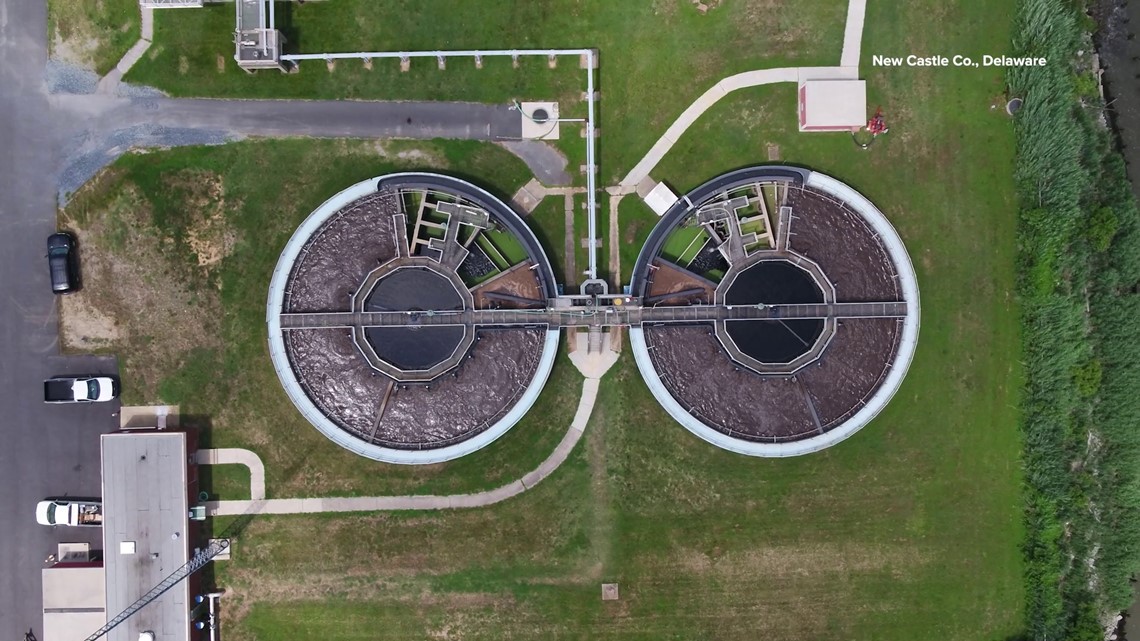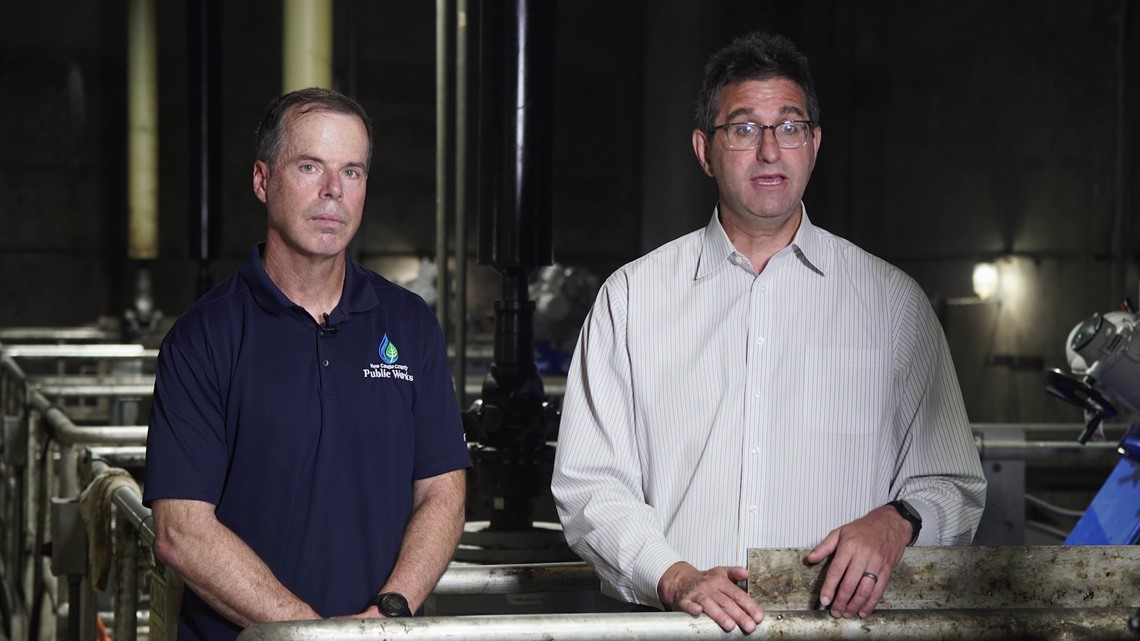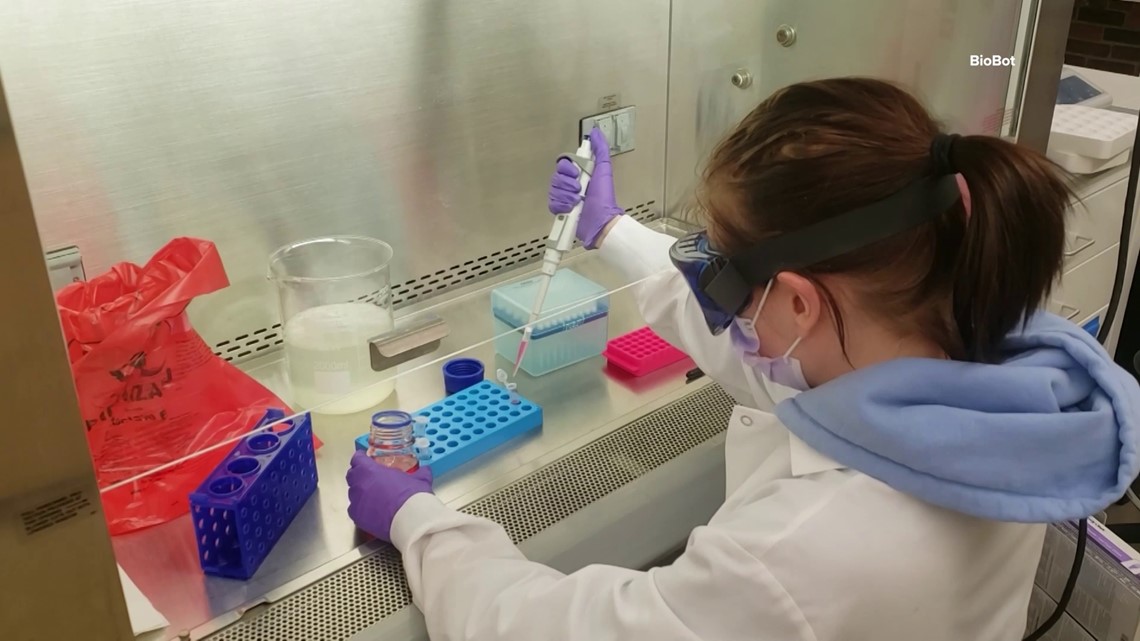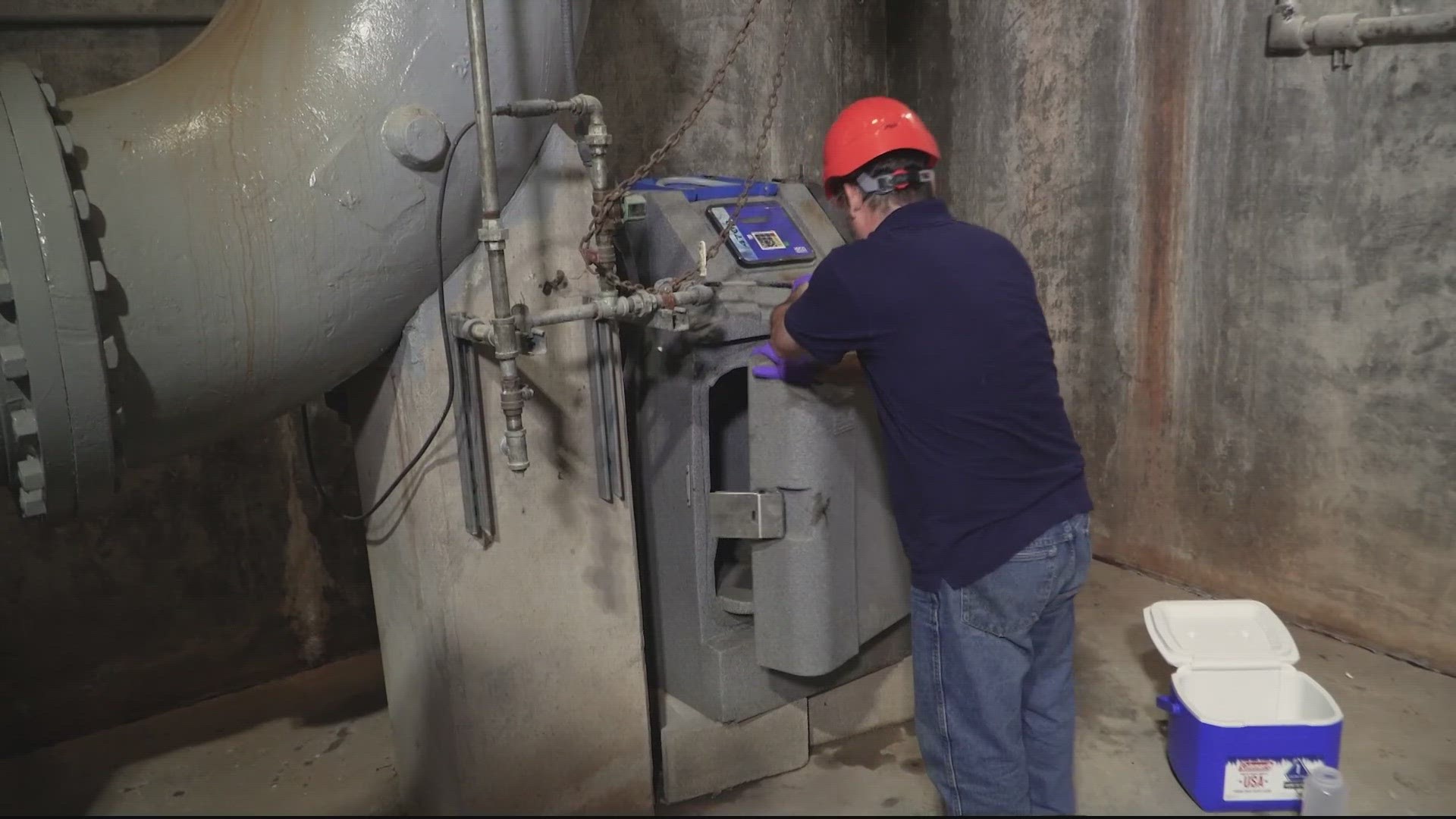NEW CASTLE, Del. — In 2021, more than 2,600 Virginians died from fentanyl overdoses, according to the CDC. The spike in deaths compelled Virginia Gov. Glenn Youngkin to order his state’s health department to start tracking the spread of fentanyl use.
One original method that’s coming up to accomplish the task is sampling sewage for the presence of the drug, just as New Castle Delaware has begun doing.
WUSA9 witnessed first-hand an employee at New Castle County Delaware’s pumping station taking a sample of wastewater. It’s raw, untreated sewage, and it holds the answer to tracking this county’s growing fentanyl abuse problem.
"This stuff was everywhere," said Mike Harris with New Castle County Public Works. "It wasn't just in like certain neighborhoods, it was everywhere."


Wastewater fentanyl tracking can be so precise that it can tell if one neighborhood of around 3,000-4,000 people is experiencing a surge in fentanyl use separate from the next neighborhood.
"Everybody poops, it's not a biased sample," New Castle County Executive Matt Meyer explained. "It enables us to look in an unbiased way and say, 'hey, in this neighborhood where we never thought there were spikes in cocaine use and fentanyl use, we need to pay more attention to these neighborhoods.' So it allows us, as policymakers, to make decisions without traditional biases."


Samples are shipped to a lab run by BioBot in Massachusetts. WUSA9 first told you about the company in 2020 when they began testing Purcellville, Virginia’s wastewater for COVID-19 virus.
"It's really messy," Biobot analytical chemist Kait Hess Jimenez said." Of course, there's drugs in there. But there's also waste in there. And sometimes we even received samples in the lab that have large macro particles, so things like corn and parsley, and we've even seen bugs in there."
The Virginia Department of Health is open to the lessons learned in New Castle County, Delaware.
"We're reaching out to other localities and states who are already monitoring fentanyl and wastewater and also communicating with the CDC," said Julie Henderson, director of the Office of Environmental Health Services at Virginia Department of Health. "We don't currently have funding for this. We're exploring those options. Much of it depends on that. But I know the Governor is excited for us to get this started. So I would definitely say that within a year, we would be trying to launch this."


The goal is to use sewage tracking to specifically target fentanyl abuse assistance funds.
"How do you allocate budget to send officers to do public relations campaigns?" Mayer asked. "Where do you put billboards? Where do you send community partners to go and do basic community education? What schools do you invest in to do preventative education? It's all very helpful."

